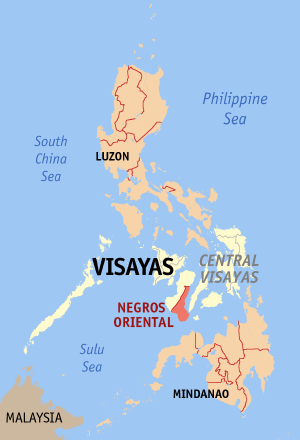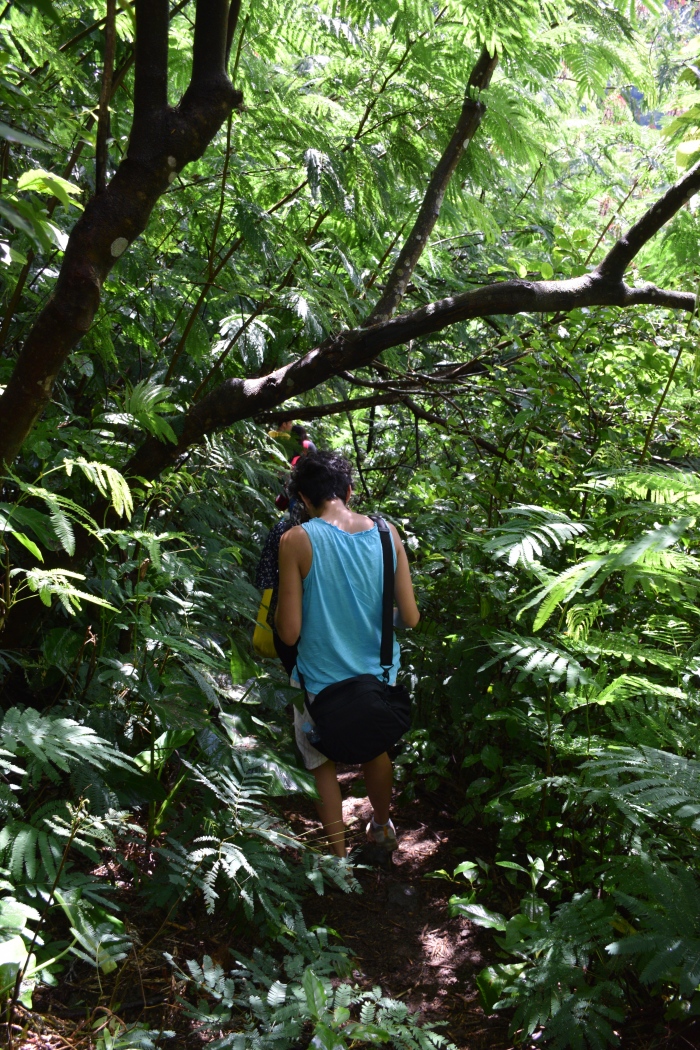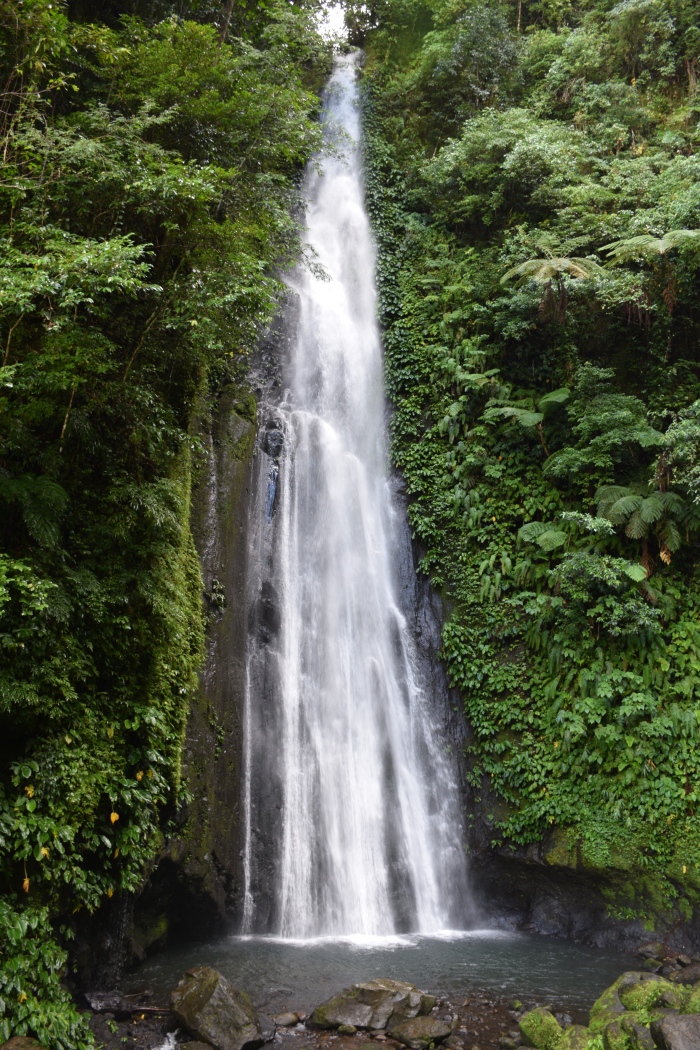Imagine hiking through 805 square kilometers of pristine rainforest in South East Asia. Envision walking for an hour and a half to see the magnificent 60-foot Pulang Tubig waterfall with a local guide. It’s hard to believe it only costs 150 Philippine Pesos which is 3 DOLLARS AND 93 CENTS CAD which can be split among a group of travelers.
Where is this heavenly cheap adventure found? It is the Northern Negros Natural Park (NNNP) on Negros Island in the Philippines! It is easily the cheapest place to go on a Jungle trek in South East Asia. It’s possible to visit a second waterfall to the hike. The additional cost is 50 Pesos (1.51 CAD). Beyond the cheap cost, the rainforest flora (plant life) was rich and diverse. While the wildlife was hard to spot, many animals could be heard in the bushes. Birdlife International has included this natural park as a bird area that actually boasts 140 bird species, 40 percent of which are found only on Negros [1]. The NNNP is actually one of the few places in the world the Endangered Visayan Spotted Deer or Warty Pig can be spotted! If unable to see them here, the Negros Forest and Ecological Foundation Incorporated in Bacolod City, Negros has a captive breeding program where they can be observed.

The cost for signing in at the Park headquarters is 30 Pesos (79 cents CAD). A guide is necessary here as the trails and footpaths are very hard to navigate. All the guides are locals that live near or in the NNNP so the benefit is that the money goes straight back to the community and which allows for a good model of eco-tourism.

Go with a guide! So much green it’s confusing!
For the first 10 minutes of the trek, the surrounding farmland slowly turns into forest. What’s interesting about the NNNP is that a large portion of it is actually inhabited by the farmers and tour operators. At the boundary between the forest and the inhabited area, changes in the make-up of the ecosystem are caused by the meeting of these two different habitats. Continue hiking and farming diminishes into rainforest, which then transitions from fragmented patches to undisturbed primary forest. This environmental transition from a patchy, fragmented landscape to an identifiable ecosystem is called the “edge effect” or “ecotone”[2].

The edge effect is very apparent in this photo.
Twenty minutes further and the inhabitants of the rainforest are abuzz announcing their presence in the dense rainforest. At one point, there is a river that must be crossed. It’s recommended to have water sandals, if not, go barefoot to cross the river! From that point on, the guide will recommend continuing barefoot after the river crossing. Don’t heed the guides’ advice or extreme pain will result as it is extraordinarily rocky! The reward for continuing is seeing the spectacular wildlife! It’s possible to spot the rare Philippine owl Species casually swooping down from a tree to kill a rodent and the unknown species of tree crab that literally jumped down onto the ground and scurries away. Yes, a crab in a rainforest! (No pictures sorry! Who knew crabs could be so fast!).
Finally, after another 15 minutes, you reach the glorious waterfall. Its beauty can’t be captured with a photograph (below is an attempt). Its something you need to see yourself. So, go see the Northern Negros Natural Park. It’s cheap, it’s beautiful, it’s eco tourism, it’s worth it.

Pulang Tubig is well worth the hike!
HOW TO GET THERE:
Getting to the NNNP is very difficult. From Bacalod head to Silay City and then head to Patag (32 Km from Silay). The cheapest way is to go by Jeepney though the journey is long at 2.5 hours. Ask the locals where to catch the jeepneys from. If you look in google, you want to go to the Patag Camping Site. It’s possible to hire a private car for the day, but bear in mind those are often 10 times the price of a jeepney ride.
[1] BirdLife International. (2009). Important Bird Area factsheet: North Negros Natural Park, Philippines. Retrieved from: http://www.birdlife.org/countries/Philippines/ibas
[2] Ecological Society of America. (). Ecotone Explained. Retrieved from: http://www.esa.org/esablog/about/ecotone-explained/. Accessed February 17, 2017.
If any information is every incorrect or needs to be updated, feel free to contact me! Science is about learning from mistakes and moving forward!



Pingback: How to Ubud – The Goin'